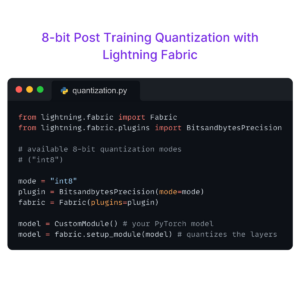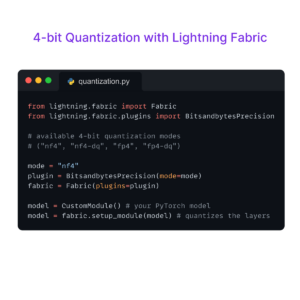Meta AI’s researchers are celebrating the release of an open atlas of 617 million metagenomic protein structures, AI is being deployed to forecast satellite failures in orbit, and developers can now integrate DALL·E directly into their apps. Let’s dive in!
Research Highlights
🔬The first database revealing the structures of the metagenomic universe at the scale of hundreds of millions of proteins has been developed by researchers at Meta AI. Decoding metagenomic structures can help us solve long-standing mysteries of evolutionary history and discover proteins that may help cure diseases, clean up the environment, and produce cleaner energy. Meta AI is now sharing their models, research paper, and a database of more than 600 million metagenomic structures, as well as an API that allows scientists to easily retrieve specific protein structures relevant to their work.
🧮 Researchers in California proposed an algorithm that they claim is effective at forecasting any unidentified quantum process over qubits. Their algorithm combines methods for discovering characteristics of an unobserved state and discovering a rough approximation to an unobserved observable. The aim of the research was to demonstrate that their algorithm can learn to predict any local property of the output from the unknown process for a wide range of distributions on arbitrary -qubit states, with a small average error over input states taken from. Their results suggest that ML models might be able to predict the outcome of complex quantum dynamics much more quickly than the process itself would require.
🗣️ Researchers led by Laura Ruis of University College London are claiming that large language models (LLMs) are not zero-shot communicators. Despite the widespread use of LLMs as conversational agents, assessments of their performance miss the mark when it comes to understanding language in its context because humans interpret language based on their worldview and preexisting beliefs. The researchers designed a task and assessed widely applied state-of-the-art models to test whether LLMs are capable of making human-level implicature. We recommend checking out Ruis’ Twitter thread to learn more.
ML Engineering Highlights
📡 A U.S. Space Force contract was awarded to RS21, a data science startup developing AI tools for autonomous space operations, to study the use of AI to forecast satellite failures in orbit. The technology will be tested in an upcoming Space Test Program (STP) experiment, STPSat-7, projected to launch in 2023 to low Earth orbit.
📖 Pinecone, a California-based company, released a hybrid vector index, claiming to be a first-of-its-kind solution that lets engineers easily build keyword-aware semantic search into their applications.
🩺 The Israeli company Kahun developed an AI engine for clinical thinking based on medical literature. The tech developed is based on the world’s largest evidentiary medical knowledge mapping, and on the same principles that skilled doctors rely on.
Open Source Highlights
🐍 Anaconda released a report on the findings of their State of Data Science survey. The report covers topics like respondent demographics and jobs, as well as community trends, and compiles responses from nearly 3,500 students, academics, and professionals from 133 countries. The Anaconda survey response raw data is available on the Anaconda Nucleus website.
🎨 Developers can now integrate DALL·E directly into their apps and products through our API. More than 3 million people are already using DALL·E to extend their creativity and speed up their workflows, generating over 4 million images a day. Developers can start building with this same technology in a matter of minutes.
🖋️ Sigstore announced that its free software signing service for open source projects is now generally available. With more than 4 million signatures logged to date, Sigstore is among the most quickly adopted open source projects ever. It is the tool used most often by the Python and Kubernetes communities to sign their releases.
Tutorial of the Week
The limited availability of usable datasets represents a critical hurdle for researchers across many industries. Generating synthetic data — without having to collect, annotate, and manipulate images yourself — can be a gamechanger for your ML projects. Learn how to start generating synthetic data with the NVIDIA Omniverse Replicator Lightning App.
Community Spotlight
Want your work featured? Contact us on Slack or email us at [email protected]
⚡ This implementation of MINER: Multiscale Implicit Neural Representations replicates paper results in Lightning. The paper, led by a team at Rice University, introduces a new neural signal model designed for “efficient high-resolution representation of large-scale signals.”
⚡ Check out Martin Manullang’s medical imaging tutorial using Lightning — all in Indonesian! This playlist includes video tutorials on the Lightning Module, trainer, testing and inference, and much more.
⚡ IceVision is the first agnostic computer vision framework to offer a curated collection with hundreds of high-quality pre-trained models from a variety of sources. “It orchestrates the end-to-end deep learning workflow allowing you to train networks with easy-to-use robust high-performance libraries,” including Lightning!
Lightning AI Highlights
⚡ Lightning 1.8 is now live! This release includes a new strategy for improving efficiency when training large AI models with billions of parameters, secrets and CLI commands for your Lightning Apps, improvements to FSDP, and a host of other changes. Check it out!
⚡ We’re stoked to finally share our first group of Lightning Ambassadors. Each of them are working on exciting, innovative projects, and we’re thrilled to be in such esteemed company. As always, we can’t wait to see what this crew builds with Lightning!
⚡ Attending NeurIPS this year? Interested in making the transition from academia to industry? Stop by our social, hosted by two of Lightning’s very own team members with experience making this transition. Learn more here.
Don’t Miss the Submission Deadline
- CVPR 2023: The IEEE/CVF Conference on Computer Vision and Pattern Recognition. Jun 18-22, 2023. (Vancouver, Canada). Paper Submission Deadline: Fri Nov 11 2022 23:59:59 GMT-0800
Upcoming Conferences
- IROS 2022: International Conference on Intelligent Robots and Systems. Oct 23-27, 2022 (Kyoto, Japan)
- NeurIPS | 2022: Thirty-sixth Conference on Neural Information Processing Systems. Nov 28 – Dec 9. (New Orleans, Louisiana)
- PyTorch Conference: Brings together leading academics, researchers and developers from the Machine Learning community to learn more about software releases on PyTorch. Dec 2, 2022 (New Orleans, Louisiana)

